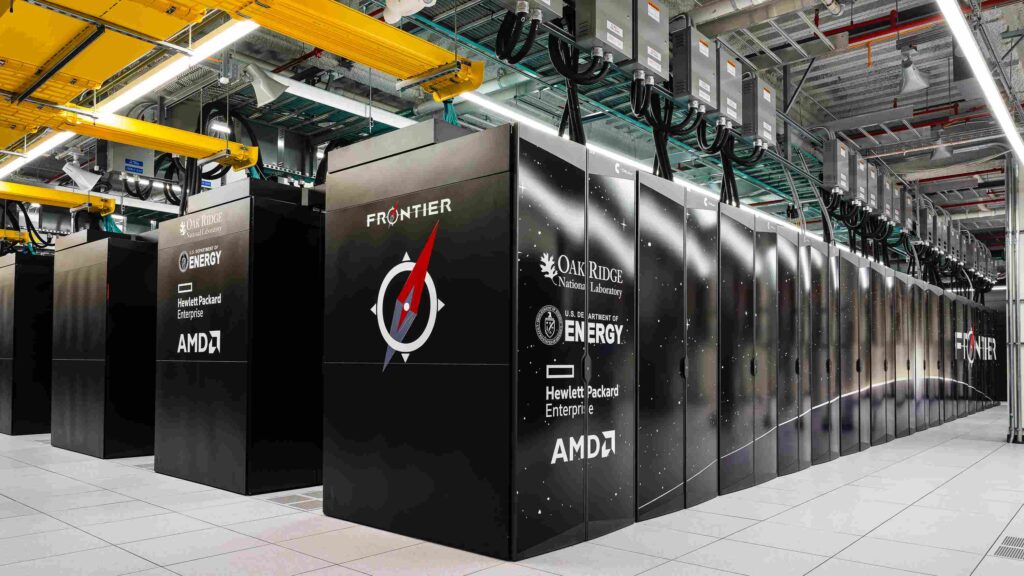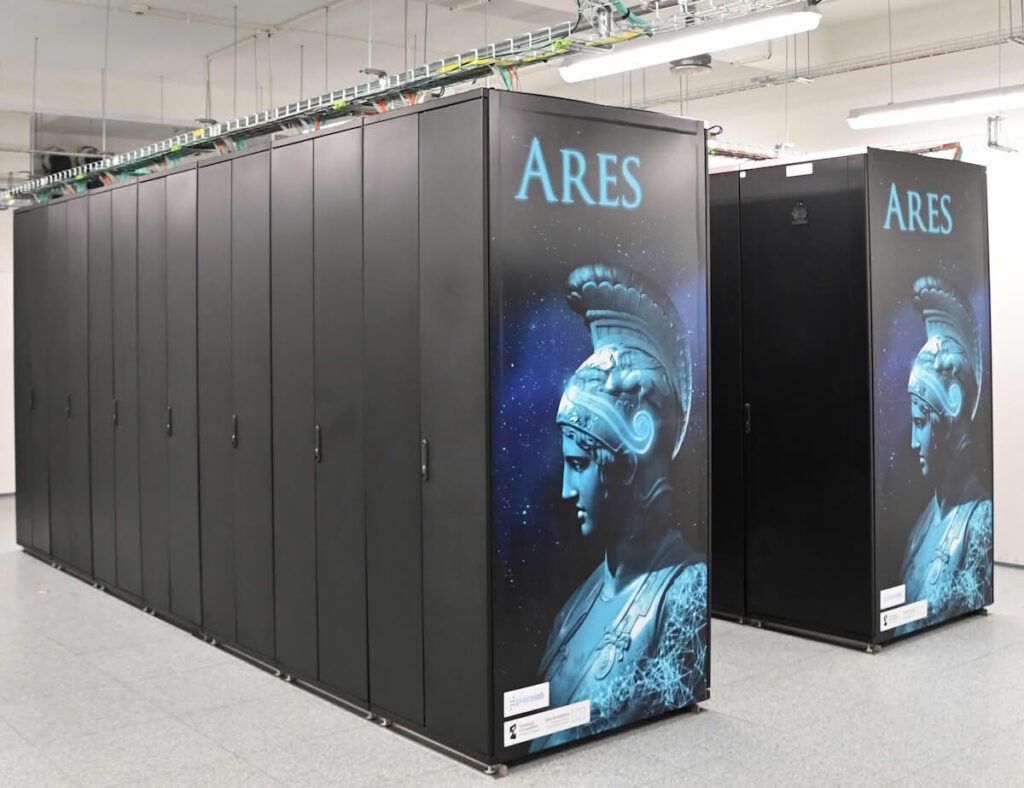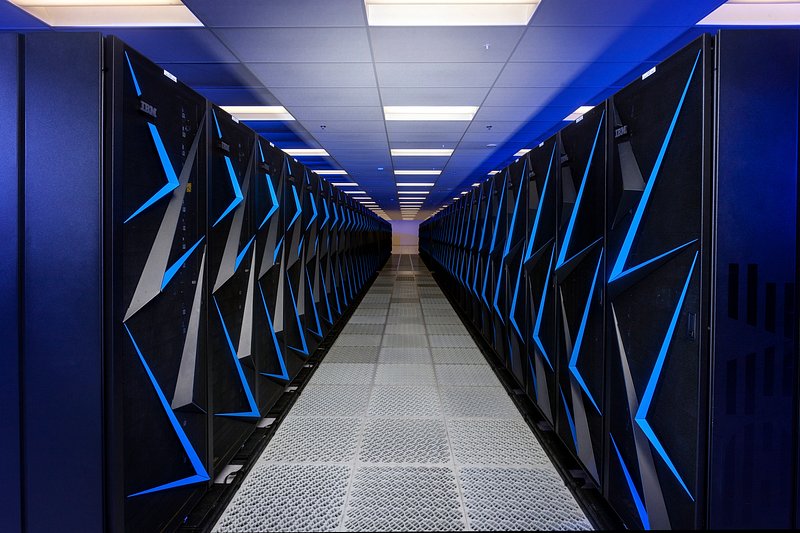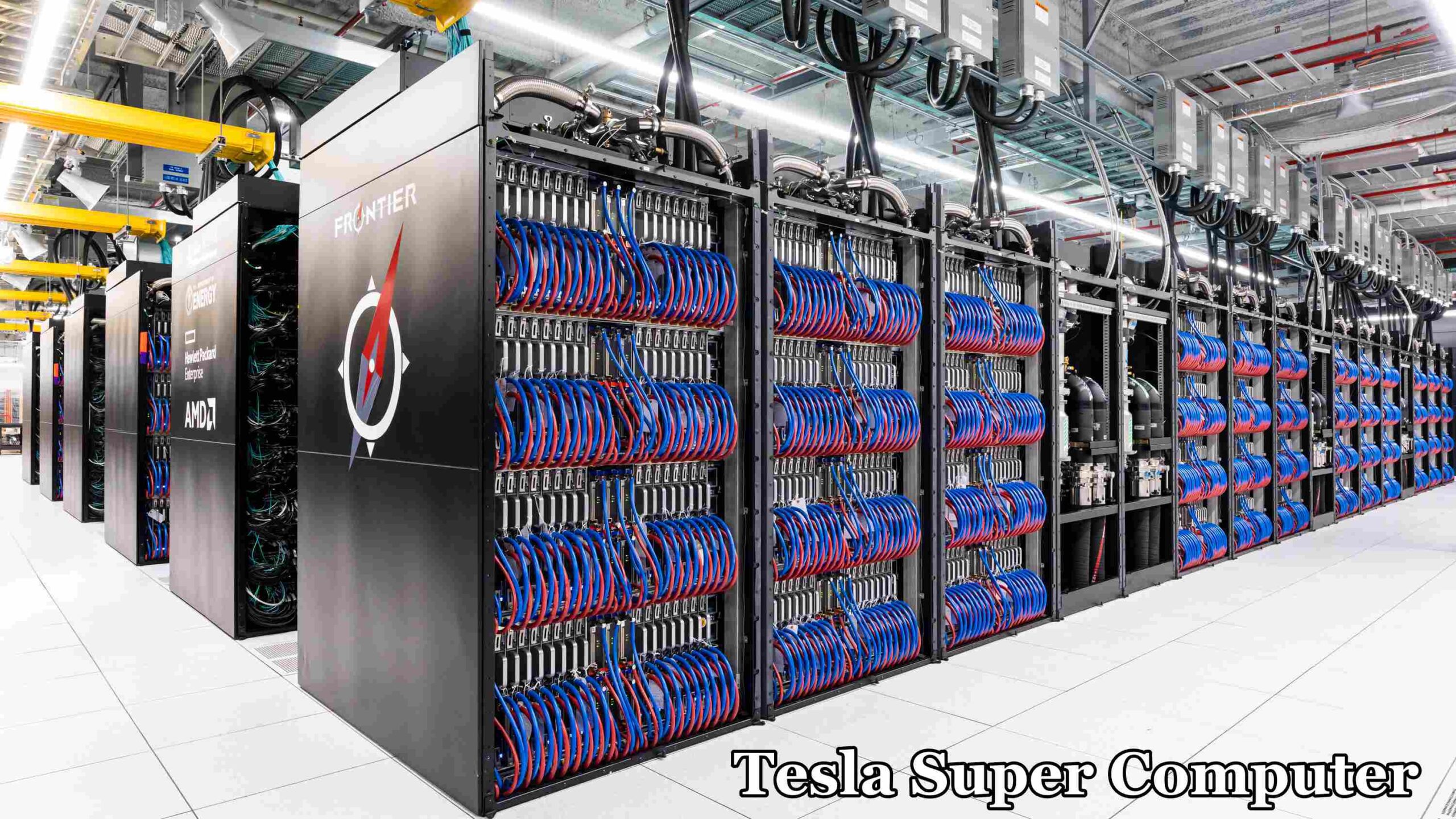Elon Musk is once again redefining what’s possible. This time, his ambitions are literally out of this world. According to recent posts on X (formerly Twitter), Musk’s next big move involves building supercomputers in Earth orbit — a plan that could revolutionize how artificial intelligence (AI) operates and how data is processed across the planet.
The idea combines Tesla’s AI chip technology with the SpaceX Starlink satellite network, effectively creating a space-based supercomputer that would extend AI’s reach beyond Earth’s atmosphere. While it sounds like science fiction, the vision is backed by real technology, strategic foresight, and Musk’s proven track record of turning the impossible into reality.
The Future of AI: Tesla’s Supercomputers Go to Space
Musk’s vision for AI in space started with a post that captured the internet’s attention. He wrote:
“Just finished a long AI5 design review with the Tesla California and Texas chip engineers. It’s going to be great, and AI6 and AI7 will follow in fast succession. AI8 will be out of this world.”

The phrase “out of this world” wasn’t just a figure of speech. It was a hint of what’s coming — AI8, Tesla’s next-generation AI processing chip, could very well be designed for use in orbit.
Understanding Tesla’s AI Chip Evolution
To understand this leap, let’s look at how far Tesla’s chips have come:
- AI4 chips currently power Tesla’s Full Self-Driving (FSD) vehicles, running the car’s inference compute — the ability to make split-second decisions based on sensor data.
- These same AI4 chips are also used in Tesla’s data centers, providing training compute — the process of teaching AI models through massive data inputs.
With each new generation — from AI5 to AI8 — Tesla’s chips are becoming faster, smaller, and more energy-efficient. And now, with AI8 reportedly designed for space-based data centers, Musk may be setting the stage for a planetary-scale decentralized AI network.
The Starlink Connection: How Satellites Power Space AI
The SpaceX Starlink satellite constellation already provides high-speed internet access worldwide using laser communication links between satellites. These laser links allow data to move at the speed of light, creating a vast, interconnected network in orbit.
When Musk responded “Bullseye” to an X user’s speculation that AI8 might power orbiting data centers, it essentially confirmed his intentions: Starlink satellites will serve as the foundation for this space-based supercomputer.
Imagine this: instead of building one massive data center on Earth, Musk could distribute thousands of small AI-powered units across Starlink V3 satellites, all working together as a single decentralized global AI network. Each satellite would host a Tesla AI8 chip, powered by solar energy, connected via lasers, and capable of processing data in orbit.
Why Move Data Centers into Space?
The idea might sound extreme, but there are real-world problems driving it — namely, energy consumption, cooling requirements, and environmental impact.
1. The Power Problem
AI data centers consume enormous amounts of electricity. When XAI’s Colossus supercomputer launched in Memphis, Tennessee, in 2024, the local power grid couldn’t handle its needs. Musk’s team had to install natural gas generators, which created significant methane emissions, raising environmental concerns.
Other companies like Meta (Facebook) have bought nuclear power plants to power their future data centers, but building new plants takes years. With the AI boom accelerating, time is a resource no one can afford to waste.
2. The Cooling Crisis
AI supercomputers generate massive heat, requiring millions of gallons of water for cooling. In an age where freshwater scarcity is a global issue, this creates serious sustainability challenges.

3. Space as the Solution
By moving data centers into orbit, these problems could be dramatically reduced. Space offers:
- Unlimited solar power (no clouds, no night in sun-synchronous orbit)
- No need for water cooling systems
- Freedom from local grid constraints
In short, space is the ultimate data center location — vast, cold, and powered by the sun.
The StarCloud Blueprint: How Space Data Centers Could Work
While Musk’s concept is still unfolding, companies like StarCloud have already modeled what orbital supercomputing could look like.
At the core of the StarCloud design is a supercomputer cluster housed in large containerized modules — essentially, racks of CPUs and GPUs — launched into orbit using heavy-lift rockets like SpaceX’s Starship.
These containers would be surrounded by giant solar arrays, each side spanning 4 kilometers, creating about 16 square kilometers of solar power generation.
Why Solar Power Works Better in Space
In orbit, solar panels are much more efficient:
- There’s no atmospheric interference to absorb sunlight.
- Panels receive constant solar exposure (in specific orbits).
- No weather or night cycles affect performance.
However, even space has challenges.
Challenges of Building Data Centers in Orbit
1. The Orbital Day-Night Cycle
Most Earth orbits still experience alternating periods of light and darkness — for instance, the International Space Station sees a sunrise every 90 minutes. This could interrupt power flow for solar systems.
Solution: Use a sun-synchronous orbit, which allows continuous sunlight by passing over the Earth’s poles. This orbit is already used for satellite imaging and Earth monitoring.
2. The Collision Risk
Space is crowded. Adding massive structures like kilometer-scale solar farms increases the risk of orbital collisions and space debris. A single mistake could create cascading damage (the “Kessler Syndrome”), making some orbits unusable.

3. The Cooling Paradox
You might think space is cold, so cooling should be easy. But in reality, vacuum doesn’t conduct heat well. On Earth, we use air and water as conductors to pull heat away from machines. In space, there’s no air or water — only radiation cooling, which is much less efficient.
To manage this, systems must radiate heat away using large heat sinks positioned in the shadow of the solar panels. It’s a complex engineering challenge, but not an impossible one.
Elon Musk’s Plan: Starlink Supercomputers in Orbit
Rather than constructing one enormous orbital station, Musk’s approach could be modular and distributed — just like the Starlink network itself.
How It Would Work:
- Each Starlink V3 satellite would carry a small rack of Tesla AI8 chips.
- Every satellite would already have solar panels for power and cooling systems integrated.
- All satellites would connect via laser communications, creating one giant global AI network in orbit.
- Ground-based systems would beam data up to the satellites, get it processed, and then beam it back down — all at light speed.
This would effectively form a planetary-scale AI system — decentralized, self-sustaining, and globally accessible.
The Road Ahead: What Needs to Happen First
Before this vision becomes reality, several key milestones must be reached:
1. Starship Must Become Fully Operational
The SpaceX Starship — the most powerful rocket ever built — is the only vehicle capable of launching the massive payloads needed for this plan. It needs to become reusable, reliable, and capable of multiple daily launches.
2. Tesla Must Finalize the AI8 Chip
The AI8 chip will be the brain of the orbital network. It must handle high-speed AI training and inference while operating in radiation-heavy environments of space.
3. Regulatory and Safety Approvals
Deploying AI data centers in orbit will require coordination with international space agencies and governments. Space debris management, radiation containment, and orbital traffic control will all be critical issues.
The Bigger Picture: Why Space AI Matters
AI is reshaping everything — from finance to design, medicine, autonomous vehicles, and beyond. But the demand for computing power is outpacing our planet’s ability to supply it sustainably.
By taking AI to orbit, we could:
- Reduce Earth’s energy strain
- Lower emissions
- Accelerate global connectivity
- Enable new levels of AI performance
Elon Musk’s Starlink Supercomputer Network could become the foundation of a planetary AI system, connecting every continent, every industry, and every user in real time.
AI and You: Preparing for the Space Age
While Musk and SpaceX push boundaries in orbit, individuals and businesses on Earth must adapt to the rapid pace of AI innovation. Those who learn to leverage AI tools today will shape the industries of tomorrow.
To help people prepare, educational platforms like Outskill are offering AI Mastermind Training programs that teach how to:
- Automate workflows
- Build AI agents
- Create AI-driven projects
- Generate income using AI tools
Investing time to understand AI isn’t just smart — it’s essential in a world where AI and automation will redefine every career.

Conclusion: The Dawn of the Space-Based AI Revolution
Elon Musk’s vision to build supercomputers in space may sound like a sci-fi dream, but it’s backed by real engineering, existing satellite technology, and the rapid evolution of Tesla’s AI chips.
By merging Tesla, SpaceX, and Starlink technologies, Musk is setting the stage for the world’s first decentralized orbital AI network — a system that could process global data at light speed, powered entirely by the sun.
It’s a bold step, but if anyone can pull it off, it’s Elon Musk. After all, he’s already given us electric cars, reusable rockets, and global satellite internet. Now, he’s aiming even higher — building the brain of the future in space.
The question is no longer if it will happen, but when.
FAQs
1. What is Elon Musk’s plan to build a supercomputer in space?
Elon Musk plans to combine Tesla’s AI chip technology with SpaceX’s Starlink satellite network to create a supercomputer in Earth orbit. This would form a decentralized AI network capable of processing massive amounts of data using solar power and laser communications.
2. What is the Tesla AI8 chip?
The Tesla AI8 chip is a next-generation AI processor currently in development. It is expected to power both Tesla vehicles and space-based data centers, providing advanced AI training and inference capabilities in orbit.
3. How will Starlink satellites be used in this project?
Starlink V3 satellites will host small clusters of Tesla AI8 chips, creating a distributed global supercomputer. Each satellite will be connected via laser communication links, allowing data to be processed and transmitted at light speed.
4. Why move data centers into space?
Moving data centers into orbit helps solve major challenges on Earth, such as power consumption, cooling requirements, and environmental impact. Space offers unlimited solar energy, no need for water cooling, and freedom from local power grids.
5. How does a space-based data center get power?
In orbit, solar panels provide continuous power to satellites, especially in sun-synchronous orbits, where they receive constant sunlight. This makes space solar power a more efficient and sustainable energy source for AI computing.
6. Can space really cool supercomputers effectively?
Cooling in space is challenging because there’s no air or water to conduct heat. Instead, heat must be radiated away using specialized heat sinks positioned in the shadow of solar panels. It’s complex but achievable with advanced materials and designs.
7. What are the environmental benefits of space data centers?
By relocating data centers to orbit, companies can reduce greenhouse gas emissions, save freshwater resources, and minimize land use. It also prevents methane pollution from gas-powered supercomputers, like those used for AI training on Earth.
8. How does Elon Musk plan to launch these orbital supercomputers?
Musk will use the SpaceX Starship, a fully reusable heavy-lift rocket, to launch AI hardware into orbit. Starship’s large payload capacity and reusability make it ideal for transporting AI data center modules or upgraded Starlink satellites.
9. How fast will data travel between Earth and space supercomputers?
Data will travel at the speed of light through laser-based communications. Although it slows slightly when passing through Earth’s atmosphere, it remains incredibly fast — much faster than traditional fiber-optic connections.
10. What problems could arise with space-based data centers?
The main challenges include orbital collisions, cooling inefficiencies, space debris management, and regulatory hurdles. Large solar arrays could also increase the risk of accidents if not properly managed in crowded orbital zones.
11. Is Elon Musk the first person to think of space data centers?
No. Companies like StarCloud have already proposed similar orbital data center concepts. However, Musk’s approach — integrating Tesla AI chips with Starlink satellites — is the most feasible and scalable version yet.
12. What is a decentralized supercomputer network?
A decentralized supercomputer is a distributed system where thousands of computing nodes work together across different locations. In Musk’s vision, each Starlink satellite would serve as a node, forming one massive planet-wide AI processor.
13. How will this affect the future of artificial intelligence?
Space-based computing could dramatically accelerate AI development, providing virtually limitless computing power. It could enable real-time AI processing for autonomous vehicles, robotics, finance, climate modeling, and deep learning research.
14. When will Elon Musk’s space supercomputer become reality?
There’s no official launch date yet. The plan depends on the successful deployment of Starship, completion of Tesla’s AI8 chip, and regulatory approval for orbital data processing. Experts expect significant progress by the late 2020s.
15. How can individuals prepare for the AI revolution?
Learning how to leverage AI tools and automation platforms is crucial. Programs like Outskill’s AI Mastermind Training teach professionals how to build AI workflows, create AI agents, and monetize AI projects, preparing them for the next era of technology.
Read More:
- Tesla Giga Berlin hits a sustainability milestone that’s so impressive, it sounds fake
- Tesla Robotaxi and autonomy dreams lean on shareholders: Wedbush
- Tesla gets big nod on Musk comp package from Charles Schwab
- Tesla makes a splash at China’s Import Expo with Cybercab and Optimus
- Elon Musk reveals new information on Tesla’s AI5 chip for self-driving


1 thought on “Elon Musk Reveals New Plan to Build a Supercomputer in Space”